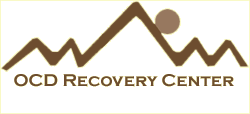
Where Caring & Science Create Solutions




By Dr. Christian R. Komor
OCD Recovery Center
OCD, Hypochondriasis, Body Dysmorphic Disorder and the other OCD-Spectrum disorders are driven by anxiety. As anxiety reaches a certain level within the individual it triggers what appears to be an "obsession circuit" in the orbital frontal cortex of the brain. These cognitive obsessions then generate behavioral compulsions designed to reduce the anxiety the individual is experiencing. This compulsive behavior, unfortunately, has the opposite effect of further increasing anxiety and doubt.
While many individuals with OC-Spectrum disorders are able to target compulsive behaviors, which they can address in exposure and response prevention (ERP) behavior therapy, others must cope primarily with obsessions. Know as "Pure-O" in the literature, it is generally agreed that obsessions without clear externally observable behavioral elements are far more difficult for the individual to surmount. The notoriously difficult to treat Body Dysmorphic Disorder is one example of such a highly obsession-dominated condition. Often patients with BDD and similar highly obsessional conditions must rely solely on pharmacological solutions.
The primary dynamic, which occurs during an obsessional episode, is a focus of attention outside of one's own body or personal field of awareness. When we obsess our attention goes outward from our consciousness into another time (future or past), another person, or a imagined reality (distortion or exaggeration of a body defect or deformity) or situation (the bump in the pavement that may have been a body being run over.) To break the obsessional cycle it is thus necessary to shift focus back inward. The popular Alanon saying of "Keep the focus on self" can summarize this act of refocusing attention inward. Two of the most effective tools for accomplishing this are: (1) Deliberate relaxation, and (2) Centering. For the purposes of this article our focus will be on the latter.
It is important to remember that it is anxiety that is at the root of obsessive compulsive behavior. Anxiety, of course, is a seemingly primal response which humans have in situations of tension or danger - what has come to be known as the "fight/flight" reaction. When we are frightened or under stress we seek to either attack the source of our stress or run away from it as fast as possible. When one has an anxiety disorder the fight/flight alarm system is being triggered frequently without due cause. The act of centering takes the individual out of the fight/flight modality and returns the concentration to a more adaptive orientation of self-ownership, relaxed preparedness and self-possession.
Centering is a true mind/body technique developed initially for use in martial arts settings, especially in the arts of Aikido and Judo. Martial artists, ballet dancers and other athletes learn to maintain a proactive focus on the geographic center of their physical body - known in Japan as the "hara". In the case of the martial artist, centering facilitates a maintenance of concentration on one's own movements rather than being distracted or drawn off into reacting to an opponent's behavior.
In daily life centering is often used in communications-skills training where people have become uncentered and are acting in an overly aggressive/forceful fashion or, (conversely) in an overly passive/submissive manner. Both imbalances tend to create interpersonal anxiety. A more "centered" response is to look inside and then make an "I statement" concerning ones thoughts or feelings. For example, "When you step on my foot I feel uncomfortable and I would like you to get off my foot" versus "You are a clumsy fool".
In OC-Spectrum obsessional disorders the mind/body act of centering can quickly shift the focus off of the obsessional person, object, or situation and back onto the reality of ones moment-by-moment experience. When we teach our obsessional patients to "center" we begin by asking them to focus their attention on the exact geographic middle of the physical body. That is a point an inch or two below the naval and in the center of the abdomen. Just as you can hold out your hand in front of you and feel the sensation of opening and closing your fingers, you can develop a "feel" for this center point in your body.
Once a sense of this center point of physical anatomy is developed, it can be used as an intervention in times of high anxiety when obsessional cognitions have begun to take over. By focusing on this center point, attention shifts inward and internal balance becomes re-established.
In order to "test" one's centered state, simply ask someone to give you a gentle push on the front of your shoulder while standing side by side with you. Your immediate tendency will be to become aware of the touch on your shoulder. This is a metaphor for the way in which obsessions distract us from our center. When this occurs do not resist the touch on your shoulder (obsession) - this will only get you more caught up in it. Instead, just refocus your attention on your center point - regarding the shoulder touch (obsession) as irrelevant to your true needs, purpose and goals. (Note: In the test situation, if you find your body wobbling when you are touched it is likely that you are not centered. If you feel a sense of solidness and stability you have mastered the centered state.)
OC-Spectrum disorders are chronic and difficult to deal with. Like exposure and response prevention work, centering is something we need to continually practice in order to see the desired benefits. While we never wish to fall into a state of "self-centeredness" it should always be our goal in obsession recovery to be "centered in ourselves".
Crum TF. The Magic of Conflict. New York, NY: Simon and Schuster; 1985.
Tohei K. Ki in Daily Life. New York, NY: Harper and Row; 1980.
Part 5: Meditations and Affirmations >>